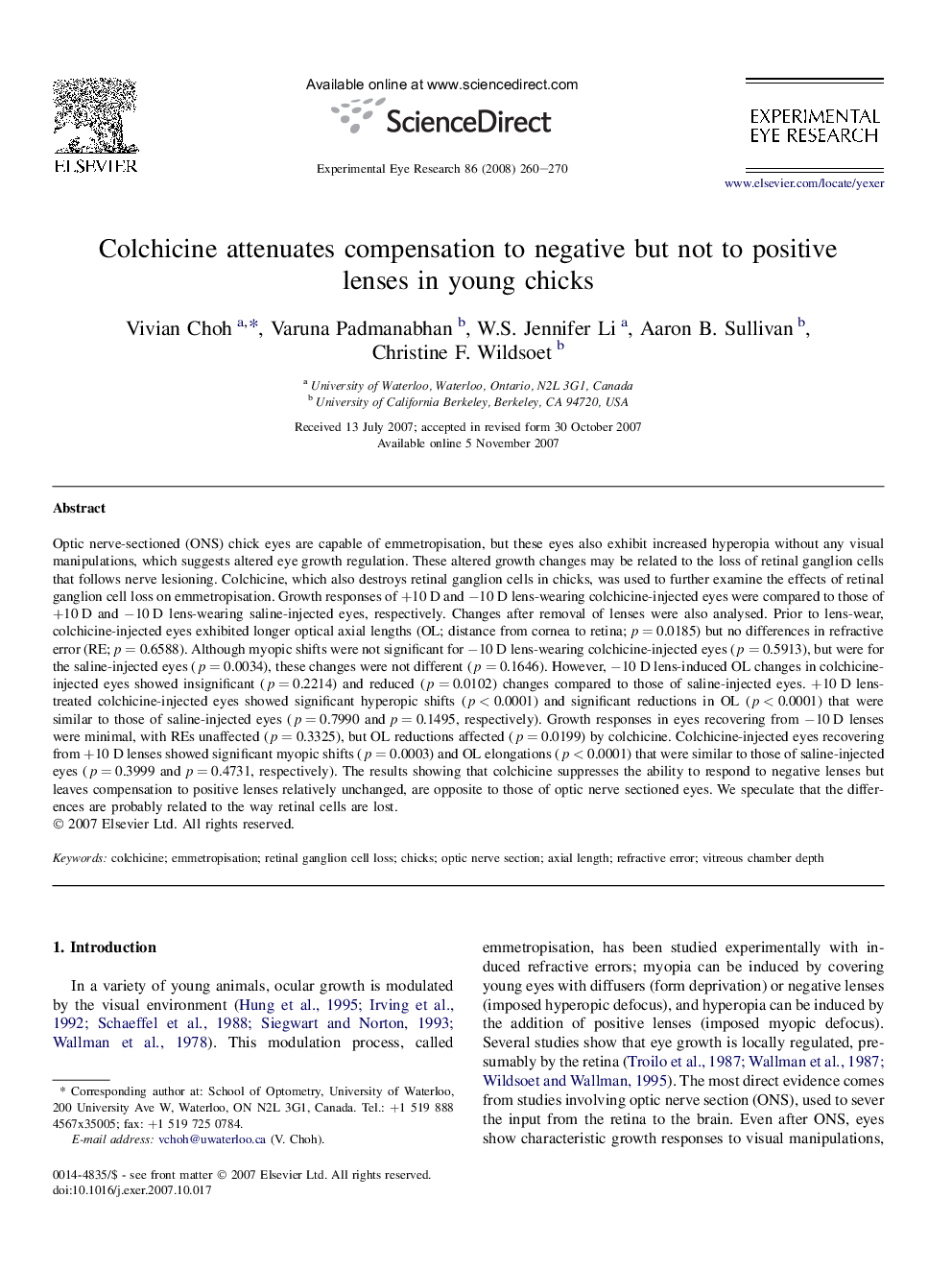| Article ID | Journal | Published Year | Pages | File Type |
|---|---|---|---|---|
| 4012285 | Experimental Eye Research | 2008 | 11 Pages |
Optic nerve-sectioned (ONS) chick eyes are capable of emmetropisation, but these eyes also exhibit increased hyperopia without any visual manipulations, which suggests altered eye growth regulation. These altered growth changes may be related to the loss of retinal ganglion cells that follows nerve lesioning. Colchicine, which also destroys retinal ganglion cells in chicks, was used to further examine the effects of retinal ganglion cell loss on emmetropisation. Growth responses of +10 D and −10 D lens-wearing colchicine-injected eyes were compared to those of +10 D and −10 D lens-wearing saline-injected eyes, respectively. Changes after removal of lenses were also analysed. Prior to lens-wear, colchicine-injected eyes exhibited longer optical axial lengths (OL; distance from cornea to retina; p = 0.0185) but no differences in refractive error (RE; p = 0.6588). Although myopic shifts were not significant for −10 D lens-wearing colchicine-injected eyes (p = 0.5913), but were for the saline-injected eyes (p = 0.0034), these changes were not different (p = 0.1646). However, −10 D lens-induced OL changes in colchicine-injected eyes showed insignificant (p = 0.2214) and reduced (p = 0.0102) changes compared to those of saline-injected eyes. +10 D lens-treated colchicine-injected eyes showed significant hyperopic shifts (p < 0.0001) and significant reductions in OL (p < 0.0001) that were similar to those of saline-injected eyes (p = 0.7990 and p = 0.1495, respectively). Growth responses in eyes recovering from −10 D lenses were minimal, with REs unaffected (p = 0.3325), but OL reductions affected (p = 0.0199) by colchicine. Colchicine-injected eyes recovering from +10 D lenses showed significant myopic shifts (p = 0.0003) and OL elongations (p < 0.0001) that were similar to those of saline-injected eyes (p = 0.3999 and p = 0.4731, respectively). The results showing that colchicine suppresses the ability to respond to negative lenses but leaves compensation to positive lenses relatively unchanged, are opposite to those of optic nerve sectioned eyes. We speculate that the differences are probably related to the way retinal cells are lost.
